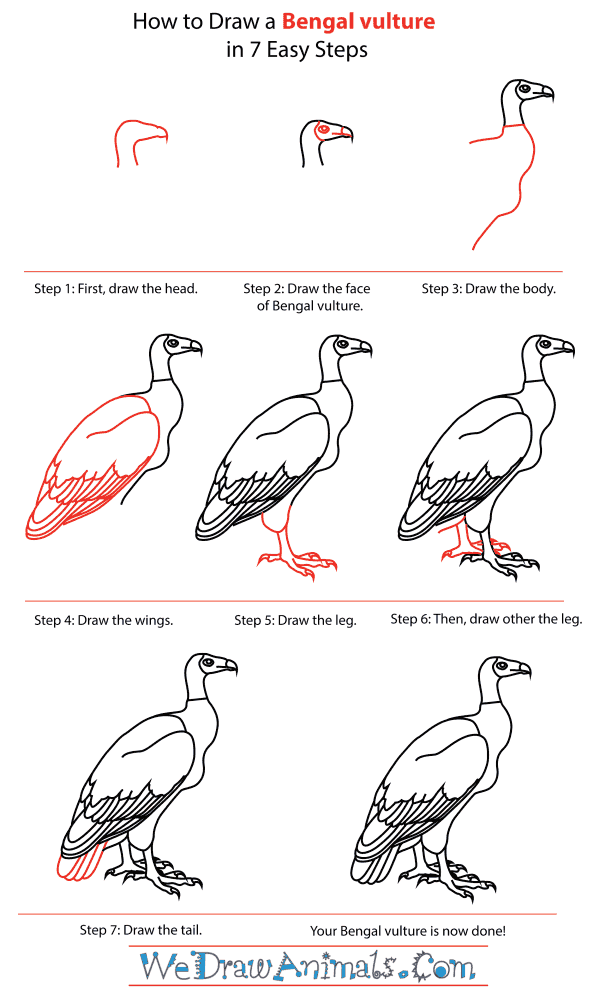In this quick tutorial you'll learn how to draw a Bengal Vulture in 7 easy steps - great for kids and novice artists.
The images above represent how your finished drawing is going to look and the steps involved.
Below are the individual steps - you can click on each one for a High Resolution printable PDF version.
At the bottom you can read some interesting facts about the Bengal Vulture.
Make sure you also check out any of the hundreds of drawing tutorials grouped by category.
How to Draw a Bengal Vulture - Step-by-Step Tutorial
Step 1: The Bengal vulture, or white-backed vultures, is an endangered bird species that lives in India. He gets his name from the patch of white on his backside and tail feathers. To draw one, start by making two curved parallel lines that end in a sharp point. It will look like the handle of a cane.
Step 2: Add a curved line for the face and add a small circle for the eye. Then add a couple of lines for the beak.
Step 3: Add a line at the base of the head for the neck, then draw a short curving line for the vulture’s back. Draw a long curving line with a bump in it for the vulture’s chest.
Step 4: Now we’ll add the wind. Draw an oval like shape that is pointier towards the bottom. Add lots of loopy lines to make the feathers.
Step 5: Draw a ‘U’ shape under the wing to make the top part of the vulture’s leg. Then draw the leg and the vulture’s talons. He has three in front, and one in back.
Step 6: Draw another leg behind the first one, and add a small line for the rest of the vultures belly.
Step 7: Last, add some tail feathers. Vultures are carrion eaters, which means they eat animals that have died. They are Mother Nature’s cleanup crew!
Interesting Facts about Bengal Vultures
Bengal vultures are more commonly called Indian white-backed vultures or white-rumped vultures. They are native to India. They used to be found in southern China and Malaysia, but became extinct in those countries in the early 1900s.Their habitats include savannas and grasslands. These birds can also be found in urban and suburban settings amongst people.
Did you know?
- The name white-backed or white-rumped comes from the white patch of feathers that are on their lower back and upper part of their tail.
- They are about 2.5 feet tall and weigh 8 to 16 pounds. Their wingspan is six to seven feet wide.
- Bengal vultures fly at an average speed of 50 to 55 miles per hour.
- They mostly eat the remains of dead animals (called carrion). If they live among humans, they also look through garbage to find food.
- To communicate with each other they grunt, hiss, and squeal.
Females lay one egg per each breeding season. Both parents build the nest and take turns keeping the egg warm. The nest is usually built on a cliff or in a tree. The egg hatches after about 48 days. The young Bengal vulture is fed by both parents and leaves the nest after three or four months.








